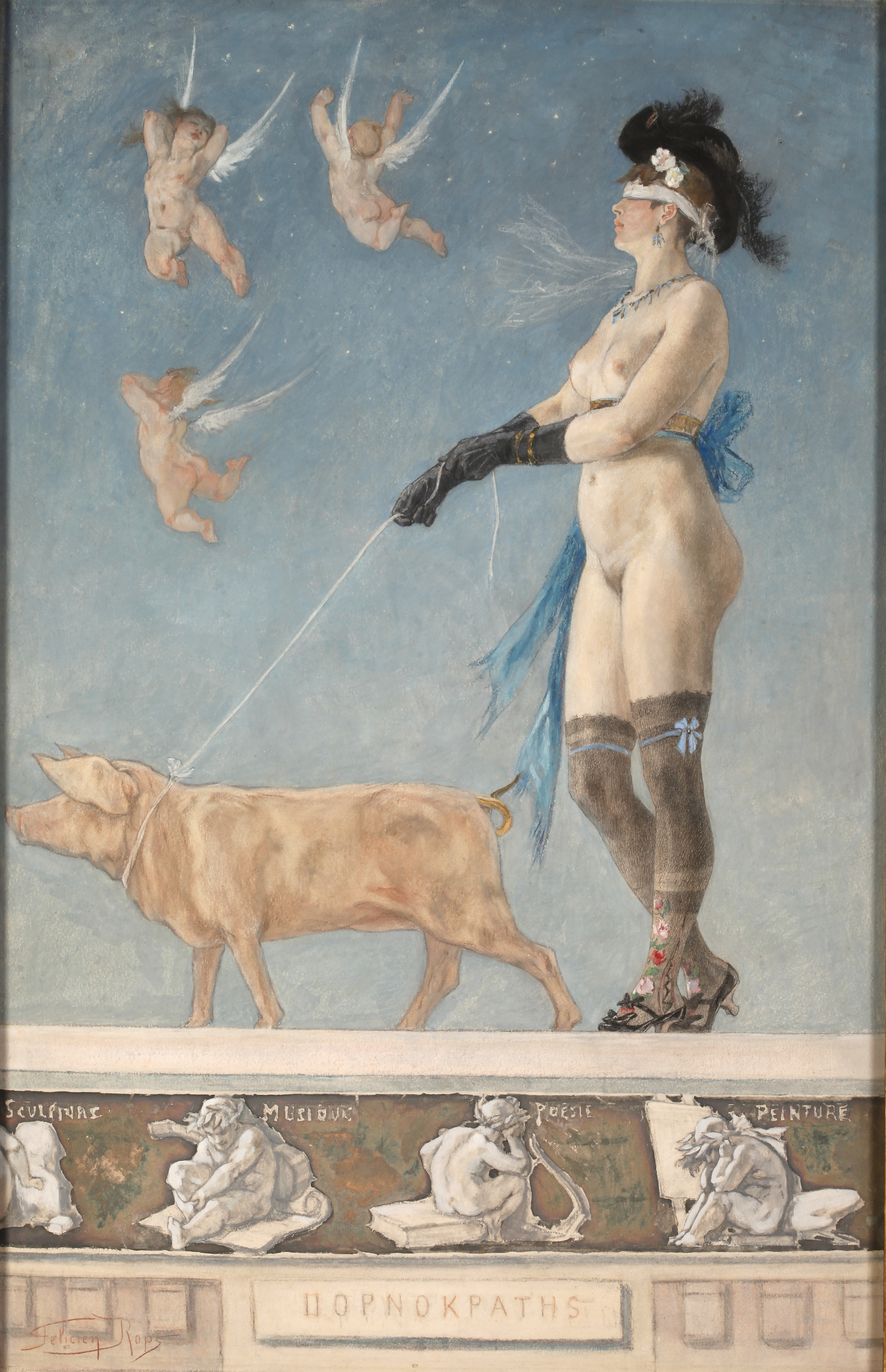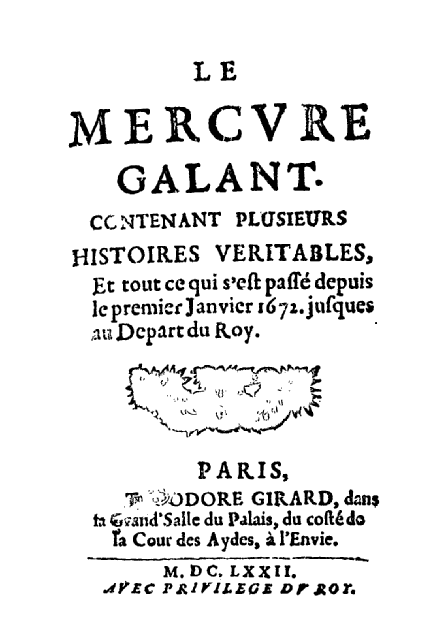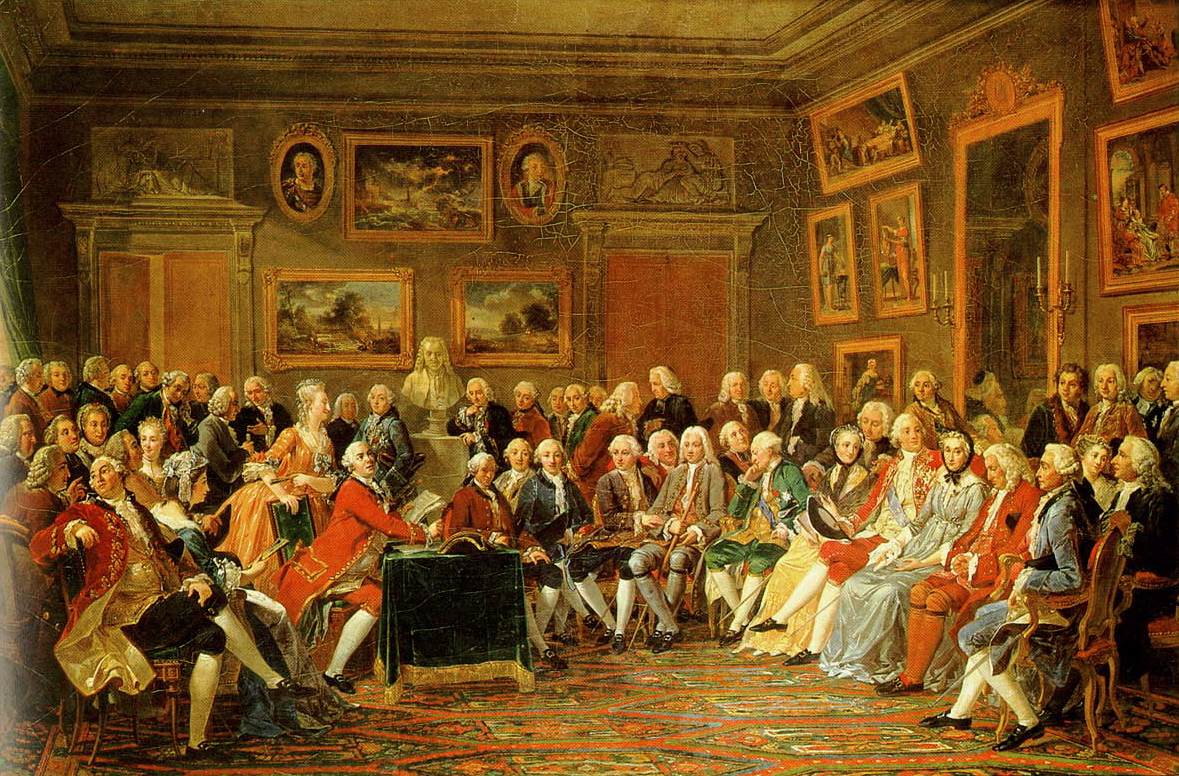|
Rachilde
Rachilde was the pen name and preferred identity of novelist and playwright Marguerite Vallette-Eymery (11 February 1860 – 4 April 1953). Born near Périgueux, Dordogne, Aquitaine, France during the Second French Empire, Rachilde went on to become a symbolist author and the most prominent woman in literature associated with the Decadent Movement of ''fin de siècle'' France. A diverse and challenging author, Rachilde's most famous work includes the darkly erotic novels ''Monsieur Vénus'' (1884), ''La Marquise de Sade'' (1887), and ''La Jongleuse'' (1900). She also wrote a 1928 monograph on gender identity, ''Pourquoi je ne suis pas féministe ("Why I am not a Feminist").'' Her work was noted for being frank, fantastical, and always with a suggestion of autobiography underlying questions of gender, sexuality, and identity. She said of herself, "I always acted as an ''individual'', not thinking to found a society or to upset the present one." Biography Early life Marg ... [...More Info...] [...Related Items...] OR: [Wikipedia] [Google] [Baidu] |
Monsieur Vénus
''Monsieur Vénus'' () is a novel written by the French symbolist and decadent writer Rachilde (née Marguerite Eymery). Initially published in 1884, it was her second novel and is considered her breakthrough work. Because of its highly erotic content, it was the subject of legal controversy and general scandal, bringing Rachilde into the public eye.Hawthorne, Melanie C. and Liz Constable (2004) ''Monsieur Vénus: roman matérialiste'', New York: Modern Language Association of America, p. xiv The novel tells the story of French noblewoman Raoule de Vénérande and her pursuit of sexual pleasure while creating a new and more satisfying identity for herself. In order to escape the ennui and malaise of her tradition-bound upper class existence, she must subvert and transcend social class, gender roles, and sexual morality. History of the work Rachilde was often flexible with biographical information; her account of writing ''Monsieur Vénus'' is no exception. According to Maur ... [...More Info...] [...Related Items...] OR: [Wikipedia] [Google] [Baidu] |
Decadent Movement
The Decadent movement (Fr. ''décadence'', “decay”) was a late-19th-century artistic and literary movement, centered in Western Europe, that followed an aesthetic ideology of excess and artificiality. The Decadent movement first flourished in France and then spread throughout Europe and to the United States. The movement was characterized by a belief in the superiority of human fantasy and aesthetic hedonism over logic and the natural world. Overview The concept of decadence dates from the 18th century, especially from the writings of Montesquieu, the Enlightenment philosopher who suggested that the decline (''décadence'') of the Roman Empire was in large part due to its moral decay and loss of cultural standards. When Latin scholar Désiré Nisard turned toward French literature, he compared Victor Hugo and Romanticism in general to the Roman decadence, men sacrificing their craft and their cultural values for the sake of pleasure. The trends that he identified, such ... [...More Info...] [...Related Items...] OR: [Wikipedia] [Google] [Baidu] |
Mercure De France
The was originally a French gazette and literary magazine first published in the 17th century, but after several incarnations has evolved as a publisher, and is now part of the Éditions Gallimard publishing group. The gazette was published from 1672 to 1724 (with an interruption in 1674–1677) under the title (sometimes spelled ; 1672–1674) and (1677–1724). The title was changed to in 1724. The gazette was briefly suppressed (under Napoleon) from 1811 to 1815 and ceased publication in 1825. The name was revived in 1890 for both a literary review and (in 1894) a publishing house initially linked with the symbolist movement. Since 1995 has been part of the Éditions Gallimard publishing group. should not be confused with another literary magazine, the (1823–1830). The original ''Mercure galant'' and ''Mercure de France'' The ''Mercure galant'' was founded by the writer Jean Donneau de Visé in 1672. The name refers to the god Mercury, the messenger of the ... [...More Info...] [...Related Items...] OR: [Wikipedia] [Google] [Baidu] |
Gisèle D'Estoc
Gisèle d'Estoc, pseudonym of Marie-Paule Alice Courbe (27 March 1845 – 8 May1894), was a French writer, sculptor, and feminist. She was also a duellist and cross dresser. Madame Paule Parent Des Barres was either her married name or another pseudonym, while her pen names included, Gyz-El and G. d’Estoc. Biography Gisèle d'Estoc was born as Marie-Paule Alice Courbe on 27 March 1845, in Nancy. She studied sculpture with Delorme and Chapu, exhibiting her works at the Salon, the official art exhibition of the Académie des Beaux-Arts in Paris, until 1899. She exhibited ''Un peintre'', a bas-relief in plaster in the sculpture section at the Palais des Champs-Elysées on May 2, 1881, her entry in the event catalogue referring to her as "PARENT DES BARRES (Mme Paule-Marie-Alice, nee COURBE)". The following year, at the same event, she exhibited ''Tête d'Etude'', a bust in dyed plaster, the catalogue referring to her by the same name as the year before. During this time, she beg ... [...More Info...] [...Related Items...] OR: [Wikipedia] [Google] [Baidu] |
Paul Fort
Jules-Jean-Paul Fort (1 February 1872 – 20 April 1960) was a French poet associated with the Symbolist movement. At the age of 18, reacting against the Naturalistic theatre, Fort founded the Théâtre d'Art (1890–93). He also founded and edited the literary reviews ''Livre d'Art'' with Alfred Jarry and ''Vers et Prose'' (1905–14) with poet Guillaume Apollinaire, which published the work of Paul Valéry and other important Symbolist writers. Fort is notable for his enormous volume of poetry, having published more than thirty volumes of ballads and, according to Amy Lowell, for creating the polyphonic prose form in his 'Ballades francaises'. Life and career Paul Fort was born in Reims, Marne ''département'', France in 1872. His father, an insurance agent, moved the family to Paris in 1878. While attending secondary school at the Lycée Louis-le-Grand, he became a noted part of the artistic community of Montparnasse. He sought out the company of avant-garde artists and befri ... [...More Info...] [...Related Items...] OR: [Wikipedia] [Google] [Baidu] |
Alfred Vallette
Alfred Vallette (1858, Paris – 1935) was a French man of letters. He founded (in 1890) and edited the '' Mercure de France'', a Symbolist Symbolism was a late 19th-century art movement of French and Belgian origin in poetry and other arts seeking to represent absolute truths symbolically through language and metaphorical images, mainly as a reaction against naturalism and realis ... review publication. His wife, Rachilde, helped him to edit it. Publications *''À l'écart'', avec Raoul Minhar, Paris, Perrin, 1891 ; réédition chez Honoré Champion, 2004. *''La Vie grise. Le Vierge'', Paris, Tresse et Stock, 1891 — . *''Le Roman d'un homme sérieux : Alfred Vallette à Rachilde, 1885-1889'', Mercure de France, Paris, 1943. Réédition (preface Édith Silve), Mercure de France, 1994. *''Lettres à A.-Ferdinand Herold, 1891-1935, et quelques-unes à son épouse'', avant-propos et notes par Claire Lesage, Philippe Oriol, Christian Soulignac, Paris, Éditions du Fournea ... [...More Info...] [...Related Items...] OR: [Wikipedia] [Google] [Baidu] |
Georges De Peyrebrune
Mathilde-Marie Georgina Élisabeth de Peyrebrune (also known as George de Peyrebrune or Georges de Peyrebrune, and Judicis de la Mirandole; pseudonyms Hunedelle, Marco, and Petit Bob; 18 April 1841 – 1917) was a key French proto-feminist Belle Époque writer of popular novels. She was "one of the most widely read women in France", and one of the country's most popular women novelists. Biography Born in Pierrebrune, a hamlet of Sainte-Orse, Dordogne in 1841, she transformed "Pierrebrune" to "Peyrebrune", making it her family name. She was the daughter of Françoise Thérèse Céline Judicis and Georges Johnston, a wealthy local land-owner. She went to Paris after the war of 1870, and she made her literary debut in the magazine '' Revue des deux Mondes'', where many of her novels were serialised. In Paris, she met Arsène Houssaye, who, after having read her ''Marco'' manuscript interceded on her behalf with the magazine editor François Buloz. Peyrebrune wrote for several w ... [...More Info...] [...Related Items...] OR: [Wikipedia] [Google] [Baidu] |
Périgueux
Périgueux (, ; oc, Peireguers or ) is a commune in the Dordogne department, in the administrative region of Nouvelle-Aquitaine, southwestern France. Périgueux is the prefecture of Dordogne, and the capital city of Périgord. It is also the seat of a Roman Catholic diocese. History The name ''Périgueux'' comes from Petrocorii, a Latinization of Celtic words meaning "the four tribes" – the Gallic people that held the area before the Roman conquest. Périgueux was their capital city. In 200 BC, the Petrocorii came from the north and settled at Périgueux and established an encampment at La Boissière. After the Roman invasion, they left this post and established themselves on the plain of L'Isle, and the town of Vesunna was created. This Roman city was eventually embellished with amenities such as temples, baths, amphitheatres, and a forum. At the end of the third century AD, the Roman city was surrounded by ramparts, and the town took the name of Civitas Petrocorio ... [...More Info...] [...Related Items...] OR: [Wikipedia] [Google] [Baidu] |
Symbolism (arts)
Symbolism was a late 19th-century art movement of French and Belgian origin in poetry and other arts seeking to represent absolute truths symbolically through language and metaphorical images, mainly as a reaction against naturalism and realism. In literature, the style originates with the 1857 publication of Charles Baudelaire's '' Les Fleurs du mal''. The works of Edgar Allan Poe, which Baudelaire admired greatly and translated into French, were a significant influence and the source of many stock tropes and images. The aesthetic was developed by Stéphane Mallarmé and Paul Verlaine during the 1860s and 1870s. In the 1880s, the aesthetic was articulated by a series of manifestos and attracted a generation of writers. The term "symbolist" was first applied by the critic Jean Moréas, who invented the term to distinguish the Symbolists from the related Decadents of literature and of art. Etymology The term ''symbolism'' is derived from the word "symbol" which derives fr ... [...More Info...] [...Related Items...] OR: [Wikipedia] [Google] [Baidu] |
Natalie Clifford Barney
Natalie Clifford Barney (October 31, 1876 – February 2, 1972) was an American writer who hosted a literary salon at her home in Paris that brought together French and international writers. She influenced other authors through her salon and also with her poetry, plays, and epigrams, often thematically tied to her lesbianism and feminism. Barney was born into a wealthy family. She was partly educated in France, and expressed a desire from a young age to live openly as a lesbian. She moved to France with her first romantic partner, Eva Palmer. Inspired by the work of Sappho, Barney began publishing love poems to women under her own name as early as 1900. Writing in both French and English, she supported feminism and pacifism. She opposed monogamy and had many overlapping long and short-term relationships, including on-and-off romances with poet Renée Vivien and courtesan Liane de Pougy and longer relationships with writer Élisabeth de Gramont and painter Romaine Brooks. Barn ... [...More Info...] [...Related Items...] OR: [Wikipedia] [Google] [Baidu] |
Colette
Sidonie-Gabrielle Colette (; 28 January 1873 – 3 August 1954), known mononymously as Colette, was a French author and woman of letters. She was also a mime, actress, and journalist. Colette is best known in the English-speaking world for her 1944 novella '' Gigi'', which was the basis for the 1958 film and the 1973 stage production of the same name. Her short story collection '' The Tendrils of the Vine'' is also famous in France. Life and career Family and background Sidonie-Gabrielle Colette was born on 28 January 1873 to war hero and tax collector Jules-Joseph Colette (1829–1905) and his wife Adèle Eugénie Sidonie ("Sido"), ''née'' Landoy (1835–1912), in the village of Saint-Sauveur-en-Puisaye in the department of Yonne, Burgundy. Jules-Joseph Colette was a Zouave of the Saint-Cyr military school. A war hero who had lost a leg in the Second Italian War of Independence, he was awarded a post as tax collector in the village of Saint-Sauveur-en-Puisaye where his c ... [...More Info...] [...Related Items...] OR: [Wikipedia] [Google] [Baidu] |
Salon (France)
The salons of Early Modern Revolutionary France played an integral role in the cultural and intellectual development of France. The salons were seen by contemporary writers as a cultural hub, for the upper middle class and aristocracy, responsible for the dissemination of good manners and sociability. It was not merely manners that the salons spread, but also ideas, as the salons became a center of intellectual conversation, as well as a debate stage for social issues, playing host to many members of the Republic of Letters. In contrast to other Early Modern institutions, women played an important and visible role within the salons. Each woman, or Salonniere, played a different role within these Salons. Some were actively involved in conversation and debate, while others just used their connections to bring others together and spread Enlightenment ideas. Historiography of the Salons The historiography of the salons is far from straightforward. The salons have been studied in dep ... [...More Info...] [...Related Items...] OR: [Wikipedia] [Google] [Baidu] |



.png)



